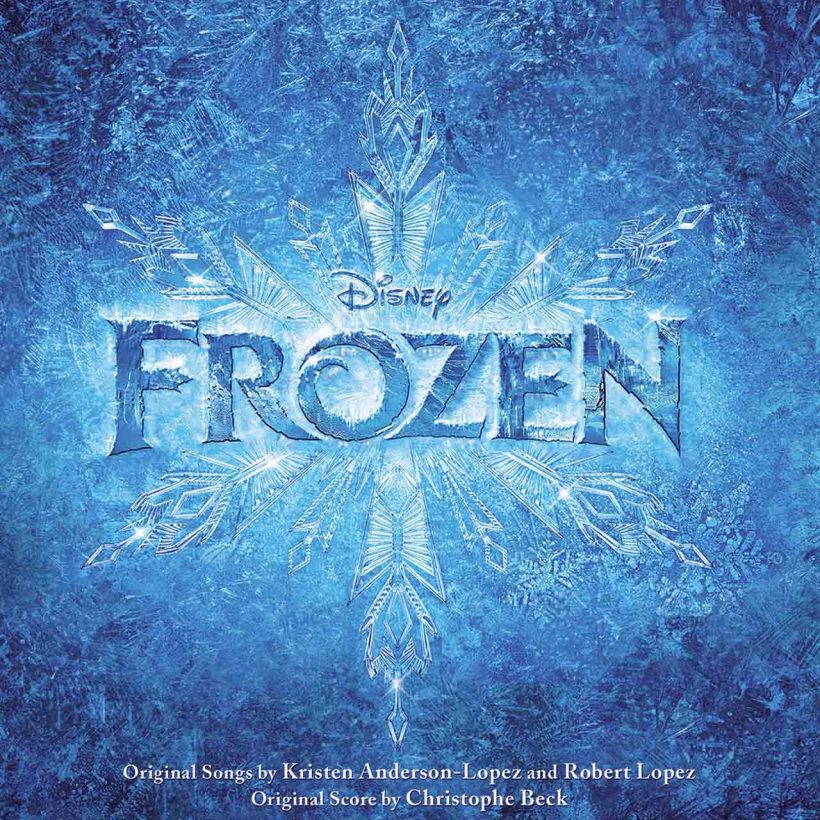‘Let It Go’: The Story Behind The ‘Frozen’ Classic
How ‘Frozen’’s anthem of self-acceptance became a global phenomenon.

Disney’s 2013 movie Frozen was a runaway success, overtaking Toy Story 3 to become the highest-grossing animated film of all time. A huge part of that success was down to “Let It Go,” the movie’s lead song and an instant classic. “Let It Go” is an anthem of self-acceptance, the story of somebody learning to embrace the thing that makes them different. The universal power ballad resonated worldwide and across generations – nearly a decade after its release, children everywhere still sing the stirring chorus melody before they speak their first words. It hit the Top 5 on the Billboard Hot 100, won the Academy Award for Best Original Song in 2014, and there are official recordings in 44 languages. “Let It Go” is more than a song, it’s a global phenomenon.
Married songwriting duo Robert Lopez and Kristen Anderson-Lopez had both tasted success before – Robert wrote music and lyrics for two of the biggest musicals of recent decades, Avenue Q and The Book of Mormon, and Kristen was the co-creator of the critically acclaimed musical, In Transit – but nothing could have prepared either of them for “Let It Go.”
Listen to the Frozen soundtrack on Spotify or Apple Music now.
In Frozen, “Let It Go” is sung by Queen Elsa of Arendelle. For many years Elsa has been hiding her magical ability to control and create snow and ice after accidentally hurting her younger sister Princess Anna. The two sisters are isolated from one another, and a rift is created, despite Elsa’s love for Anna. Tragically, the sisters’ parents are killed at sea during a storm when they’re both still teenagers. Elsa is crowned queen of Arendelle after her 21st birthday, but on the day of her coronation, a conflict with Anna causes Elsa to accidentally unleash her powers, and the new Queen turns her kingdom to ice. Elsa sings “Let It Go” from her place of isolation. She’s frustrated at the way she’s been forced to hide what she is capable of and, over the course of the song, resolves to accept her powers rather than live in fear of them.
Originally, Disney bosses had an entirely different kind of song in mind. Frozen directors and co-writers Chris Buck and Jennifer Lee had originally envisioned Elsa as the villain of the movie, but that all changed when they heard “Let It Go.” Anderson-Lopez explained the process in a Billboard interview, “We had known for months that Elsa was not going to sing like other princesses – that was her sister’s territory. And prior to writing ‘Let It Go,’ we had written a song for Elsa called ‘Cool With Me’ that had a Sara Bareilles, anti-love-song vibe. That was when Elsa was the villain of the movie, with spiky blue hair and a team of angry snow monsters. We did a major overhaul of the characters and story and ended up with an outline that included a moment we called ‘Elsa’s Bad-Ass Song,’ where she transformed into the Snow Queen. At this point, Elsa was still hovering in villain territory. In a later meeting with the creative team, we all agreed the hook ‘Let it go’ seemed right for a song about leaving it all behind, while also letting your secret powers out.”
With the conceptual hook in place, the writers got working on the song that would change the course of the movie. “Bobby and I took a walk in Prospect Park and put ourselves in Elsa’s shoes,” Anderson-Lopez explained to Billboard, “That’s when we realized the song had to be about what it would feel like to carry that secret and shame and finally feel free of that weight. At one point, I jumped up on a picnic table on a hill and started singing ‘Let it go,’ pretending to let my repressed imaginary snow powers out. We spent some hours scribbling stream-of-conscious Elsa thoughts and a few more hours noodling and putting those lyrics to melody. And I belted out the demo 24 hours later. I worried a bit about the neighbors – especially when I screeched out those last ‘storm rage OOOOONNNNN!!!’ notes.”
The songs of Frozen were integral both to its plot and its character development. “We worked with the team every day, really,” Lopez told Entertainment Weekly in 2013. “We figured out not just the placements of the songs within the story but also what the story would be.” ‘Let It Go’ changed everything, as Jennifer Lee revealed to the New York Times in 2014, “The minute we heard the song the first time, I knew that I had to rewrite the whole movie.” Elsa was no longer a villain and – crucially – retained her powers. Now Frozen was no longer the archetypal story of good versus bad, it was a tale of acceptance versus fear.
Broadway veteran Idina Menzel sang “Let It Go” with astonishing dynamism, beginning with a tangible sense of vulnerability before investing it with a cathartic power when the gigantic chorus kicks in. Disney also released a version of the song with pop star Demi Lovato on vocals, which plays over the movie’s end credits.
“Let It Go” was not only pivotal to the success of Frozen, it genuinely helped people the world over. Marginalized groups have adopted it as an anthem – in 2019, Anderson-Lopez told NPR that she still hears from those who identify with the message and have benefitted from the song. “I think anyone who’s carrying a secret shame,” she said, “that gets so heavy that they really can’t carry it anymore, is identifying with this idea of just shedding that and starting anew. Letting it out, letting it all explode, and trying to find your way forward.”
Listen to the Frozen soundtrack on Spotify or Apple Music now.












